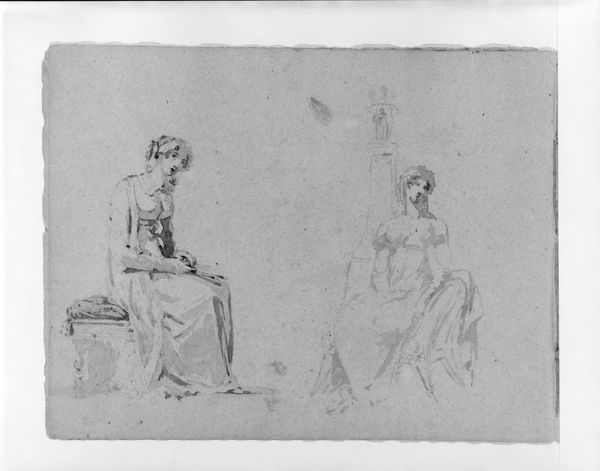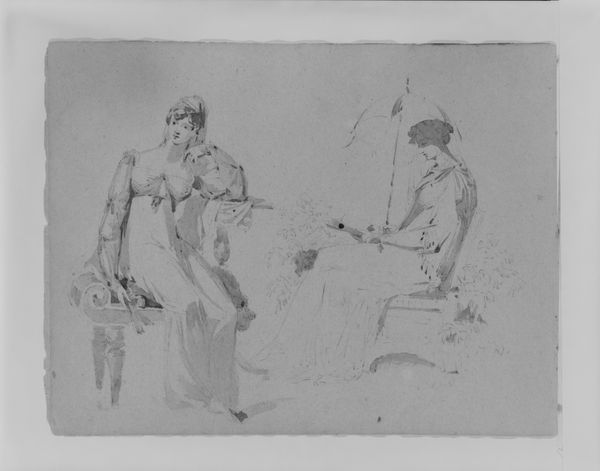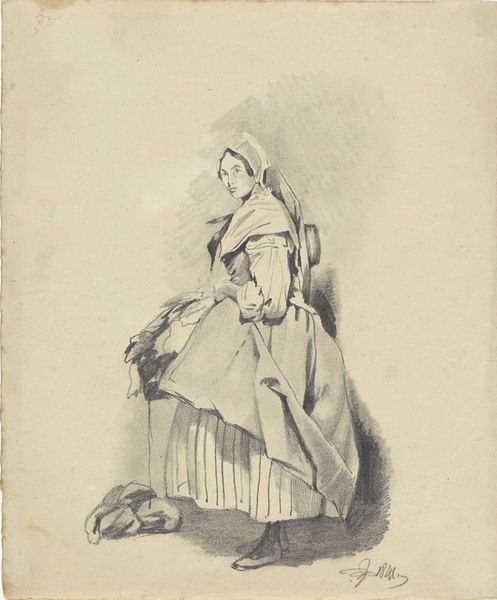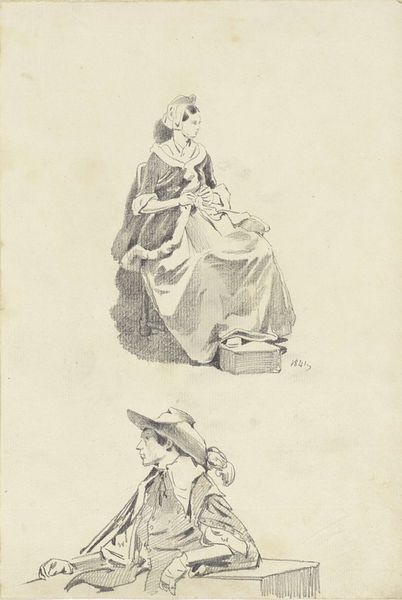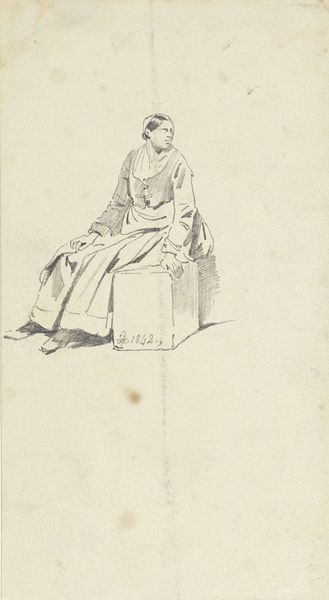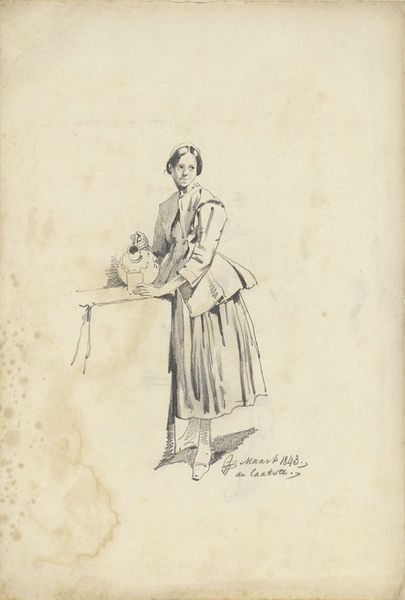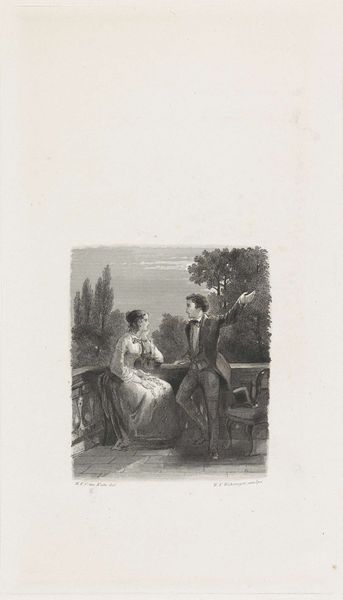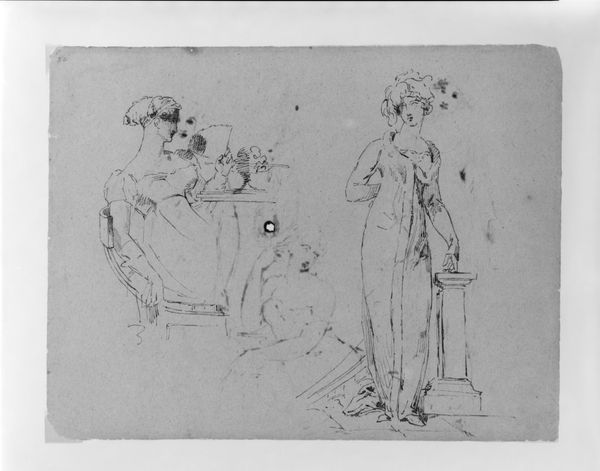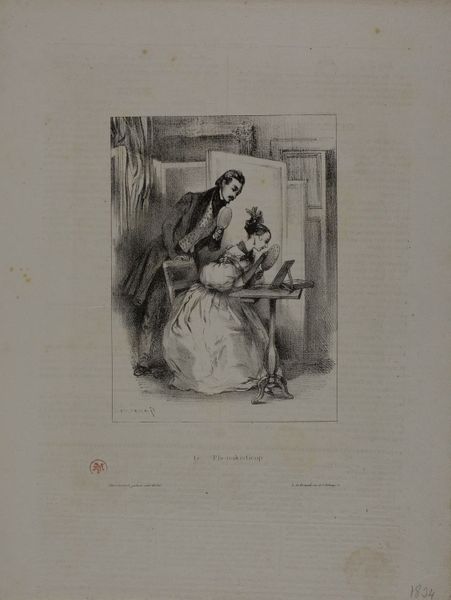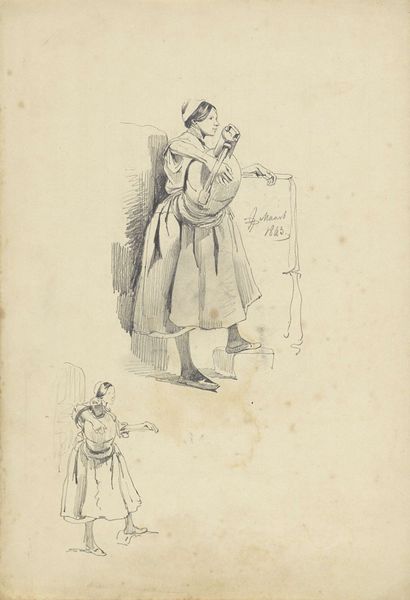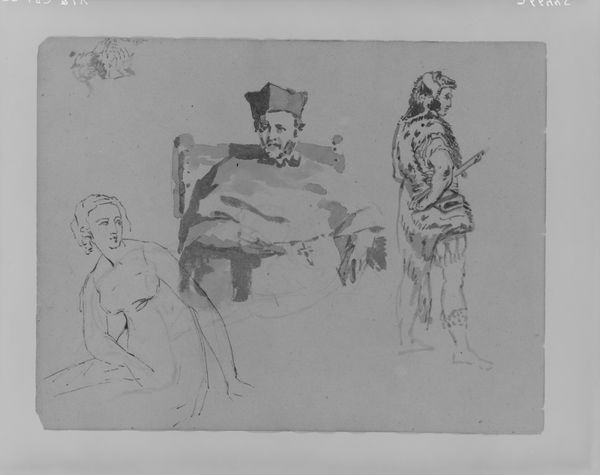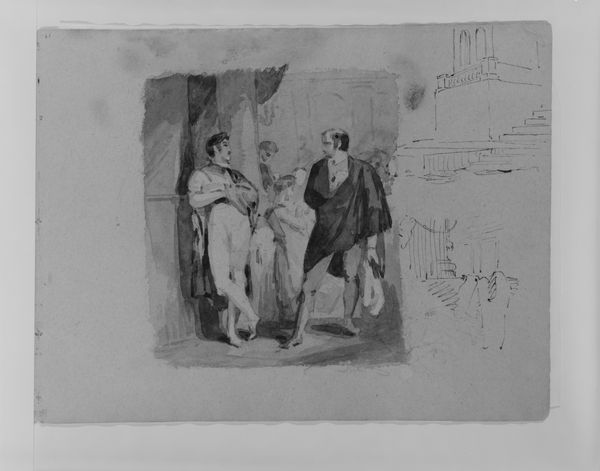
drawing, pencil
#
portrait
#
drawing
#
amateur sketch
#
light pencil work
#
pencil sketch
#
incomplete sketchy
#
figuration
#
idea generation sketch
#
sketchwork
#
dynamic sketch
#
detailed observational sketch
#
pencil
#
rough sketch
#
men
#
academic-art
#
initial sketch
Dimensions: 9 x 11 1/2 in. (22.9 x 29.2 cm)
Copyright: Public Domain
Editor: This is "Figure Studies" by Thomas Sully, dating from 1810 to 1820. It’s a pencil drawing, and the lightness of the medium gives it a dreamlike, ephemeral quality. I'm curious, how do you interpret this work, especially considering the period in which it was made? Curator: What strikes me are the poses of the women and how they potentially represent the constraints placed on women during the early 19th century. The woman at the desk seems engaged, perhaps writing or studying, hinting at intellectual pursuits, while the other woman seems lost in contemplation. Do you see a contrast there? Editor: I do see a contrast, yes. One appears active, the other passive. Does that dichotomy speak to the limited roles available to women at that time? The choice between intellectual engagement and domestic idleness? Curator: Precisely. Sully, as a portraitist of the elite, was keenly aware of societal expectations. I wonder if these figures reflect the internal tensions women of that era faced: the pressure to conform to societal norms versus a desire for self-expression and agency. Look closely at their garments, their subtle gestures. How do they contribute to this reading? Editor: Their dresses seem to constrain them, even in this casual sketch. The active woman’s posture is straighter, almost defiant, while the other seems to melt into the chair. Maybe Sully captured more than just a likeness; perhaps he captured a quiet rebellion. Curator: That's an astute observation. And it highlights the power of art to not only reflect its time but to subtly critique it. Thinking about gender roles and how they were represented—or challenged—even within seemingly conventional portraits, is really at the core of understanding works from this period. Editor: It's fascinating to think of a seemingly simple sketch containing so much social commentary. It encourages me to look beyond the surface. Curator: Exactly. Art becomes a mirror reflecting society's unspoken dialogues, revealing complex narratives about identity and power that resonate even today.
Comments
No comments
Be the first to comment and join the conversation on the ultimate creative platform.
